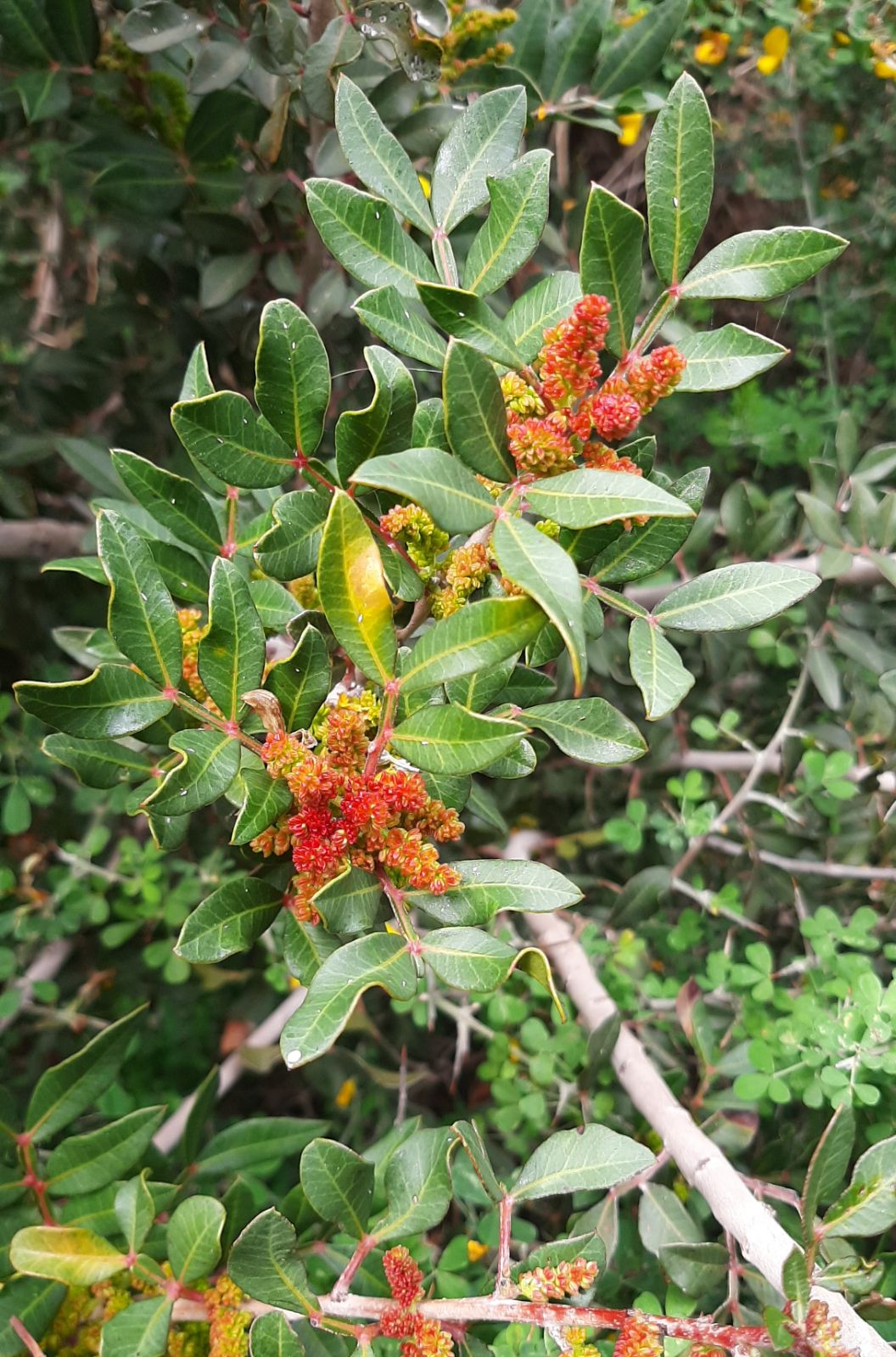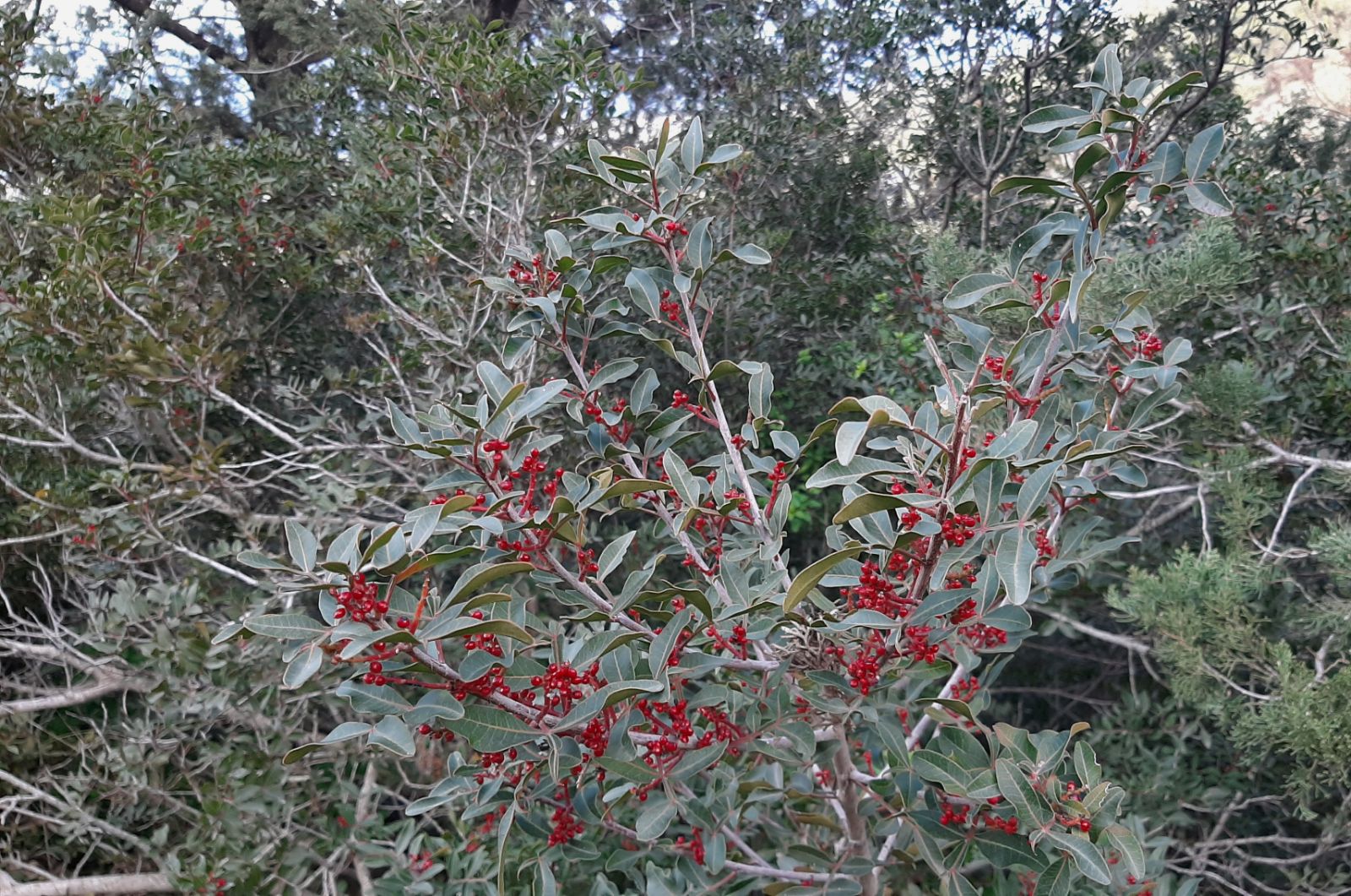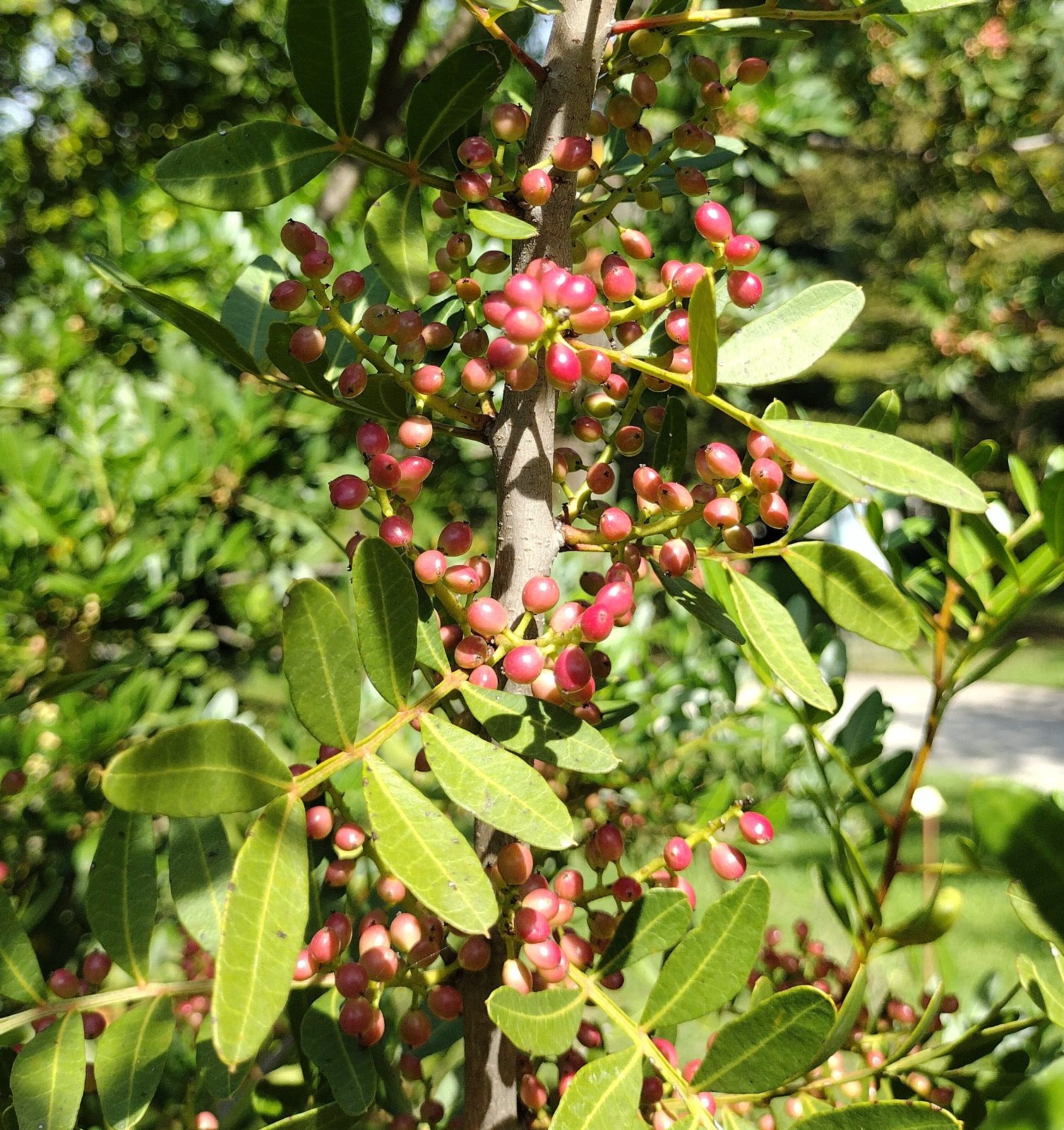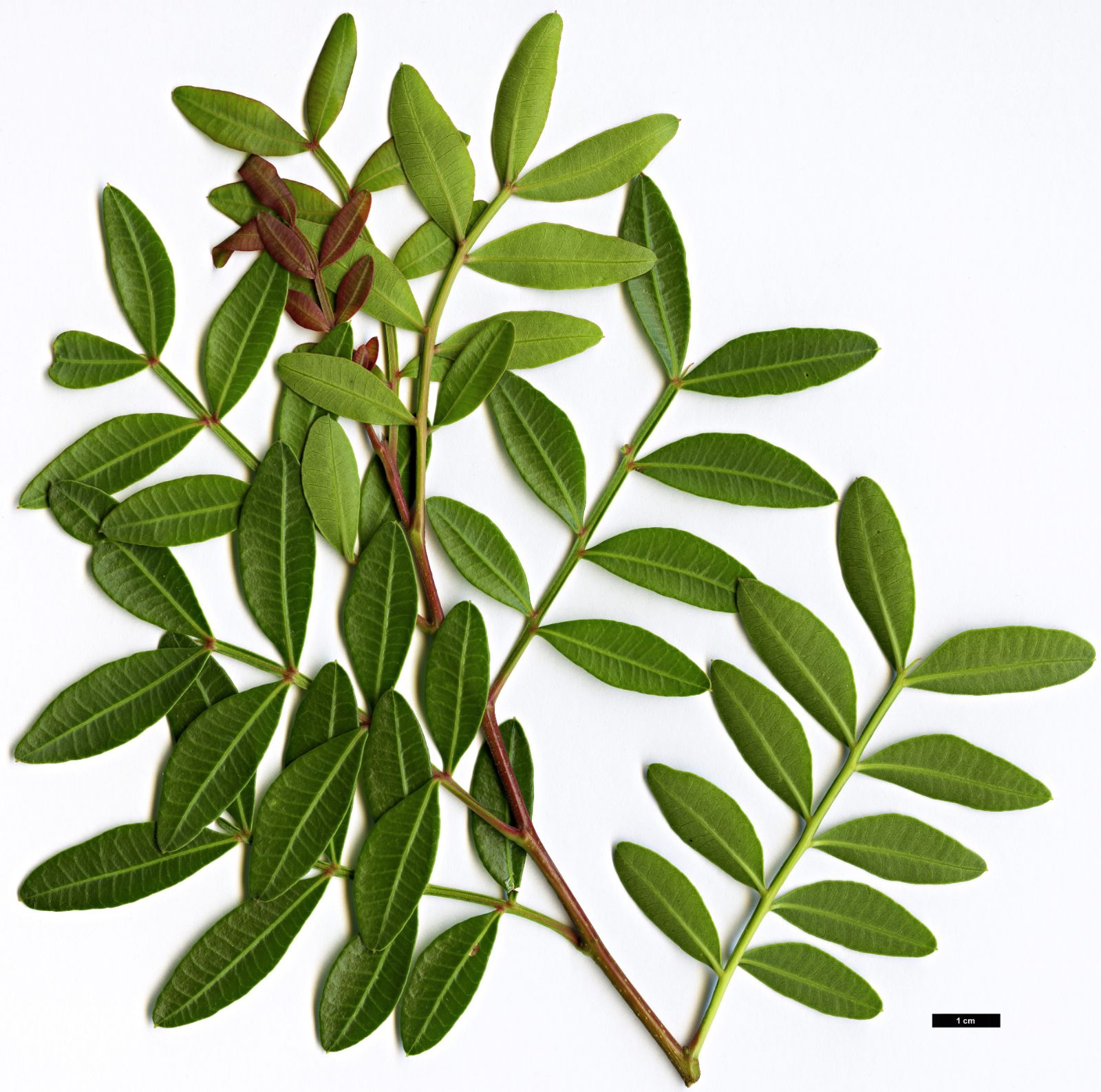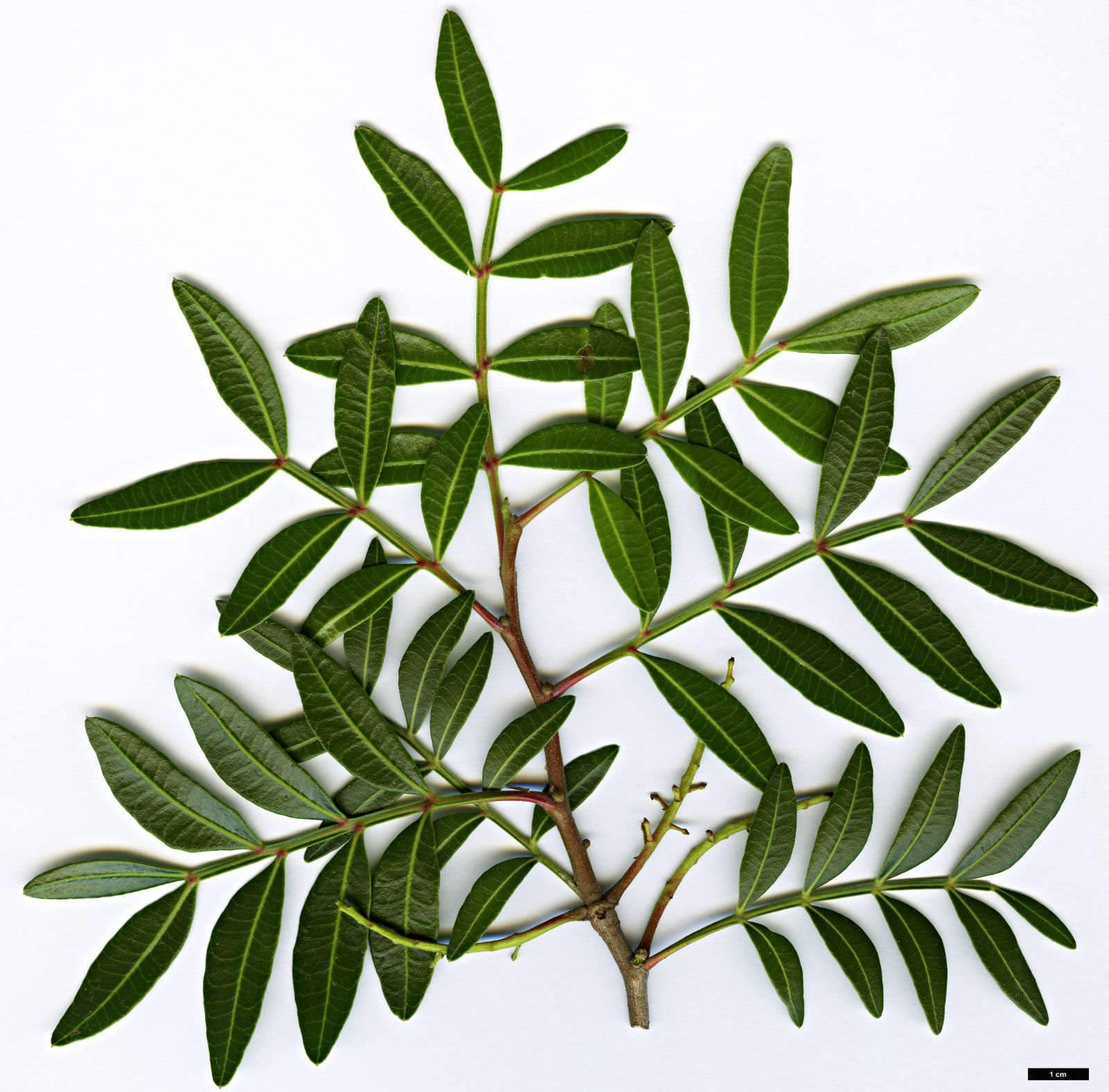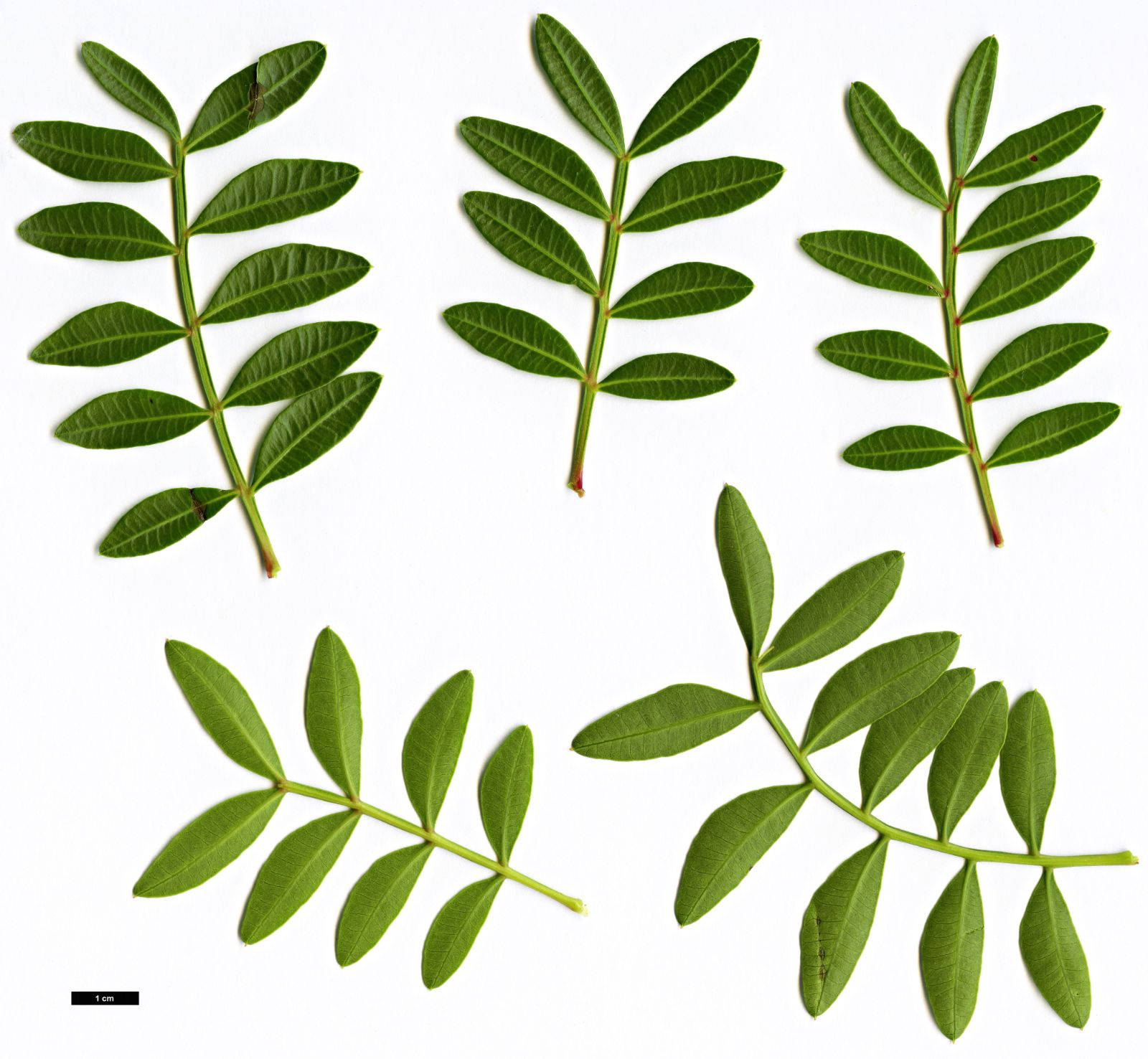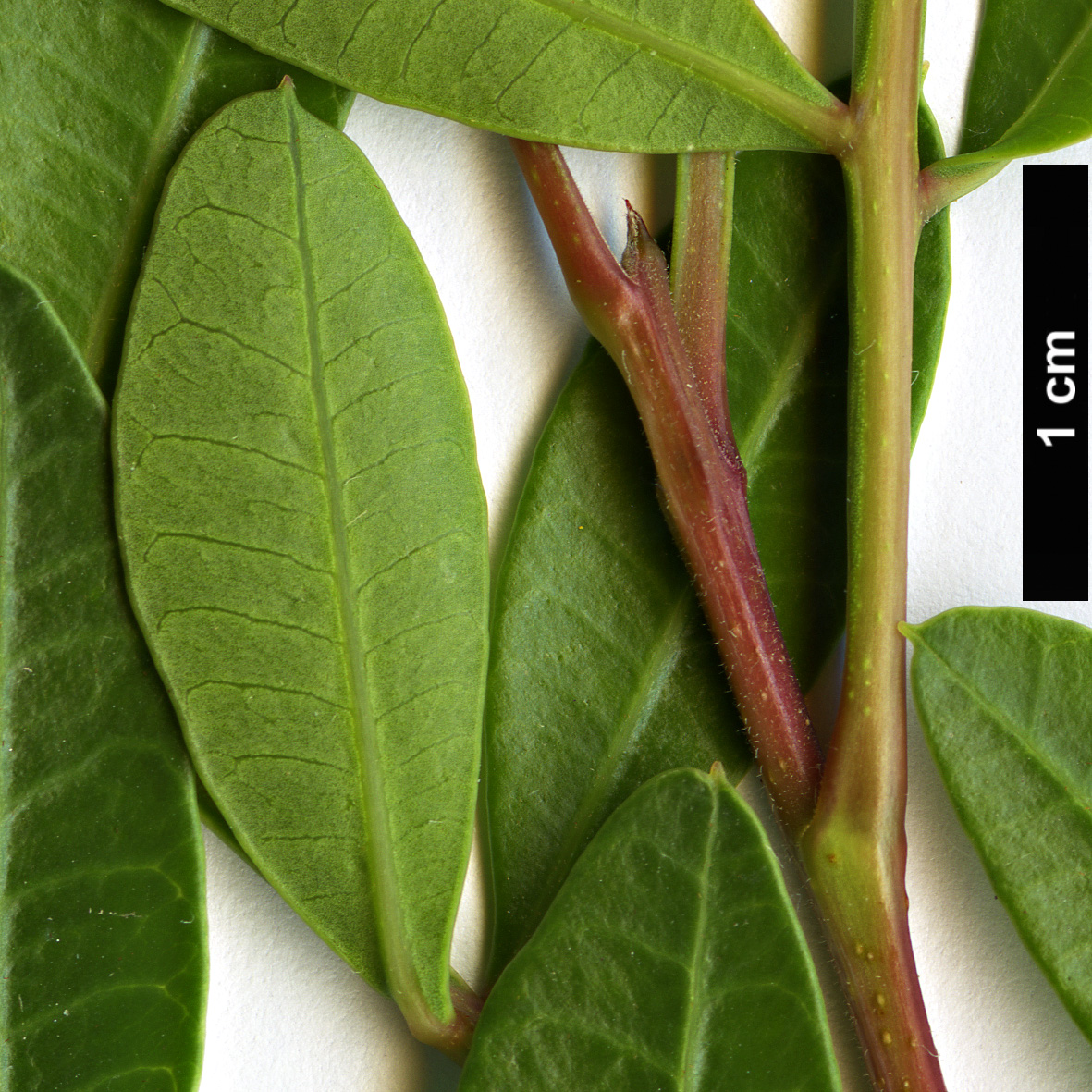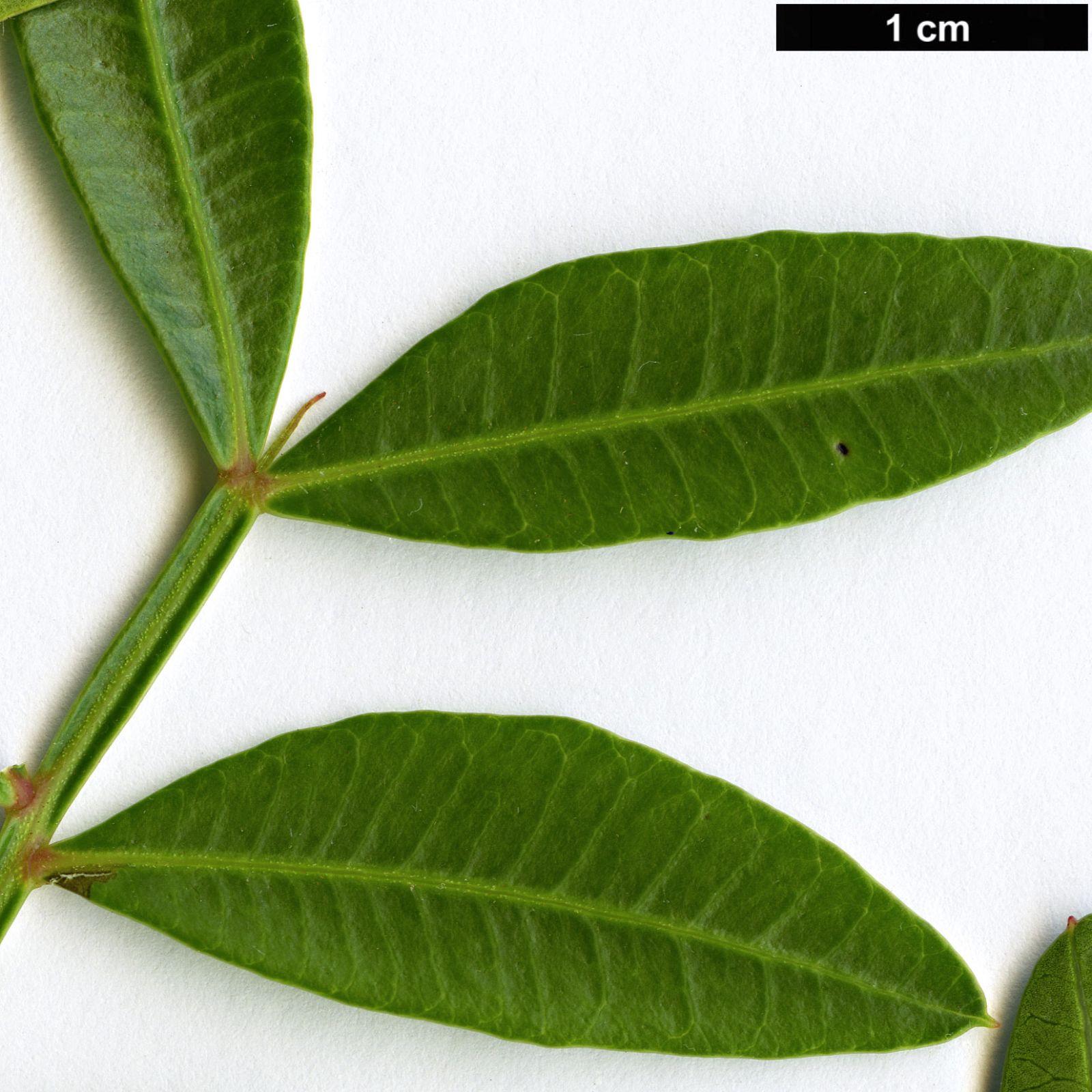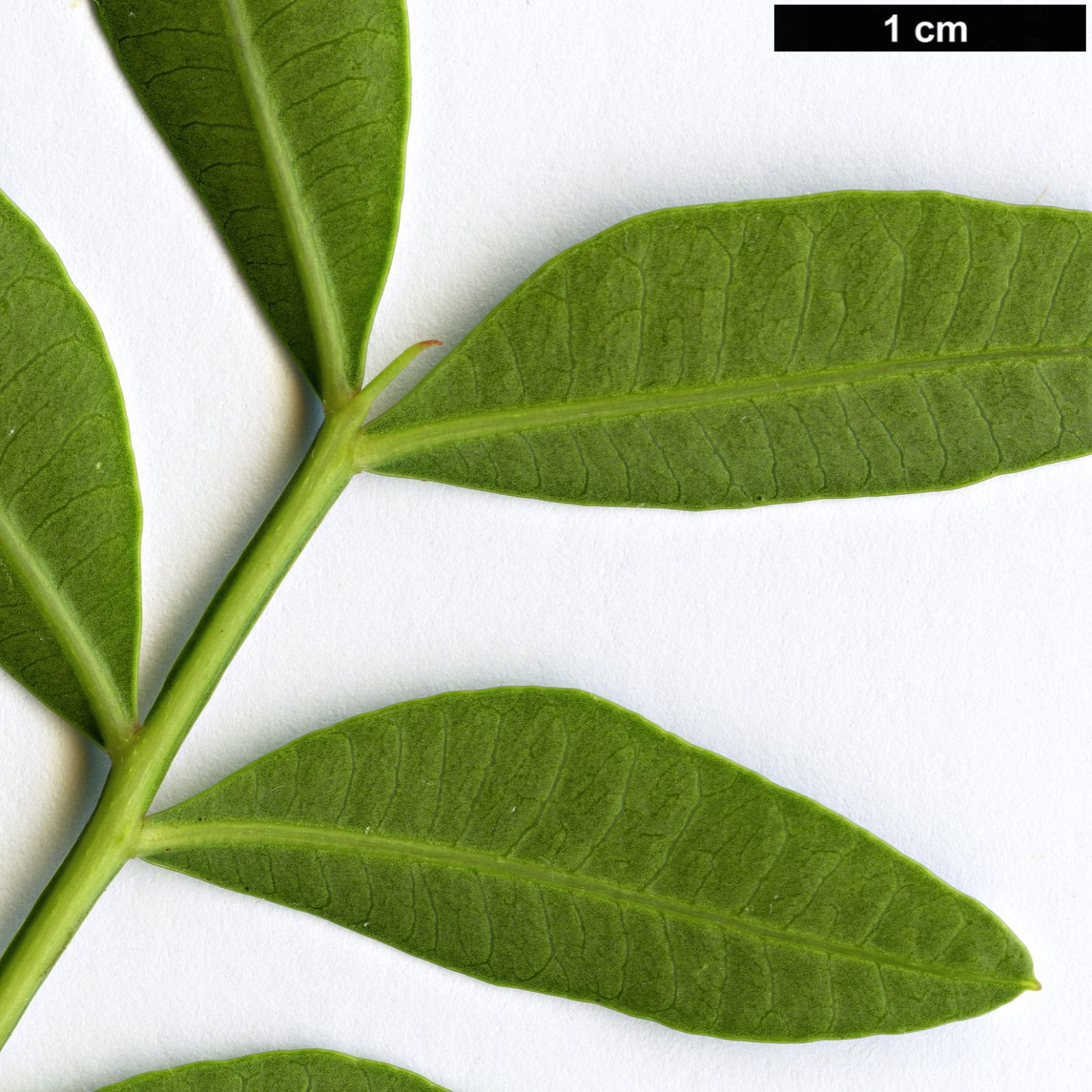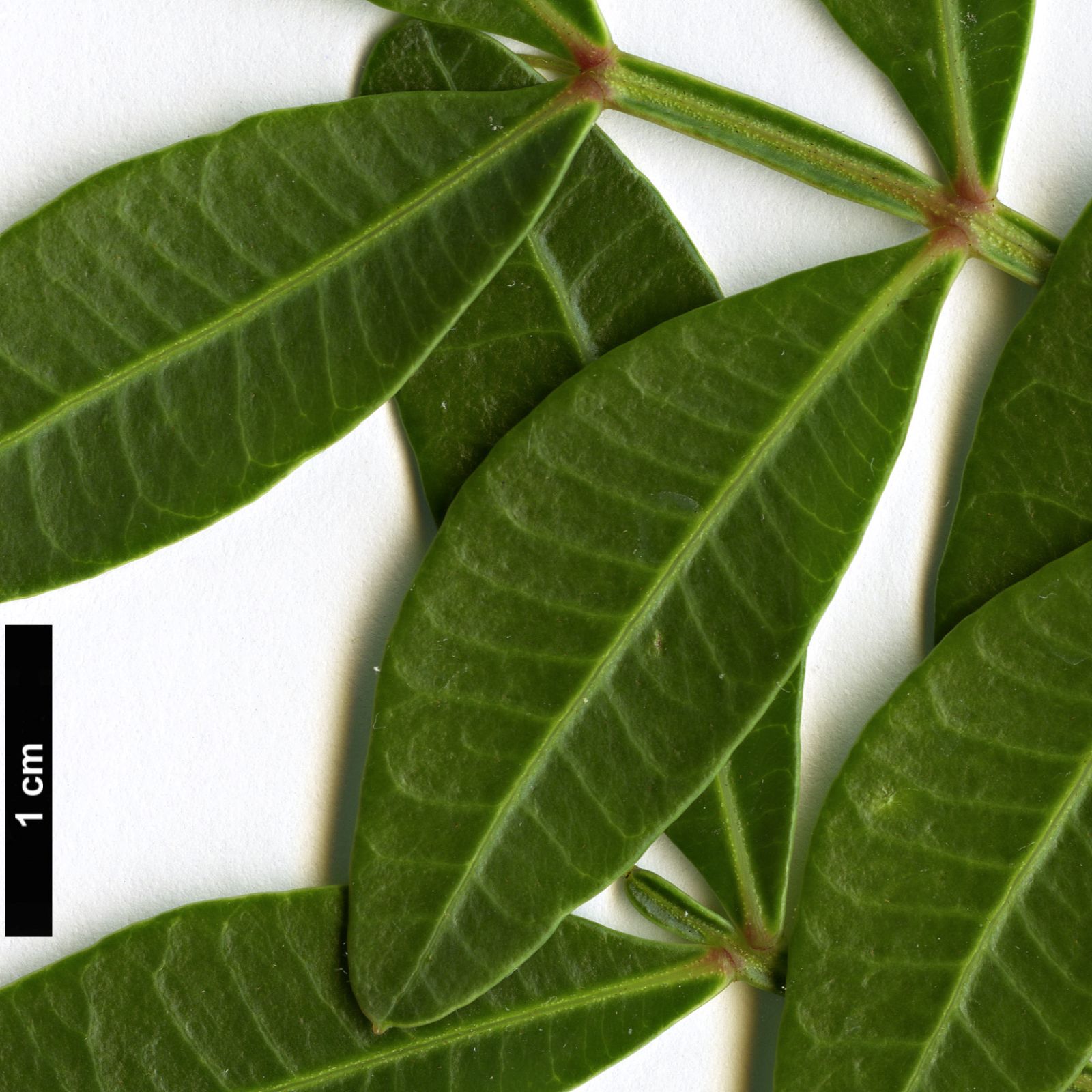Pistacia lentiscus
Credits
Article from Bean's Trees and Shrubs Hardy in the British Isles
Recommended citation
'Pistacia lentiscus' from the website Trees and Shrubs Online (treesandshrubsonline.
Genus
Common Names
- Mastic
An evergreen bush or small tree, occasionally 15 or 20 ft high; young shoots warted, not downy. The leaves are evenly pinnate, consisting of four to ten leaflets without a terminal odd one; the common stalk is winged. Leaflets 3⁄4 to 11⁄2 in. long, 1⁄4 to 1⁄2 in. wide; narrowly oblong to obovate, glabrous, with a very short, abrupt point. Flowers very densely packed in short axillary panicles 1 to 2 in. long. Fruits first red, then black, about the size of large peppercorns.
P. lentiscus is one of the most characteristic members of the Mediterranean macchie (maquis), and is found wherever this occurs, both within the Mediterreanean basin and in Portugal and Atlantic Morocco; also in the Canaries. It was in cultivation by the second half of the 17th century as a pot- or tub-plant, placed outside in summer and overwintered under glass with the oranges and myrtles (Evelyn’s Calendar, under March). It is tender and needs the protection of a wall.
In the islands of the Greek Archipelago it produces by incision of the bark a resinous substance known as ‘mastic’, which is used locally for flavouring raki and is chewed to sweeten the breath. It is also used medicinally and as an ingredient in tooth-powder. The gum mastic tree of Chios is a cultivated race, sometimes distinguished as var. chia Duham.
From the Supplement (Vol. V)
† P. × saportae Burnat – A natural hybrid between P. lentiscus and P. terebinthus, occurring occasionally where the two species are in contact, originally described from Provence.

